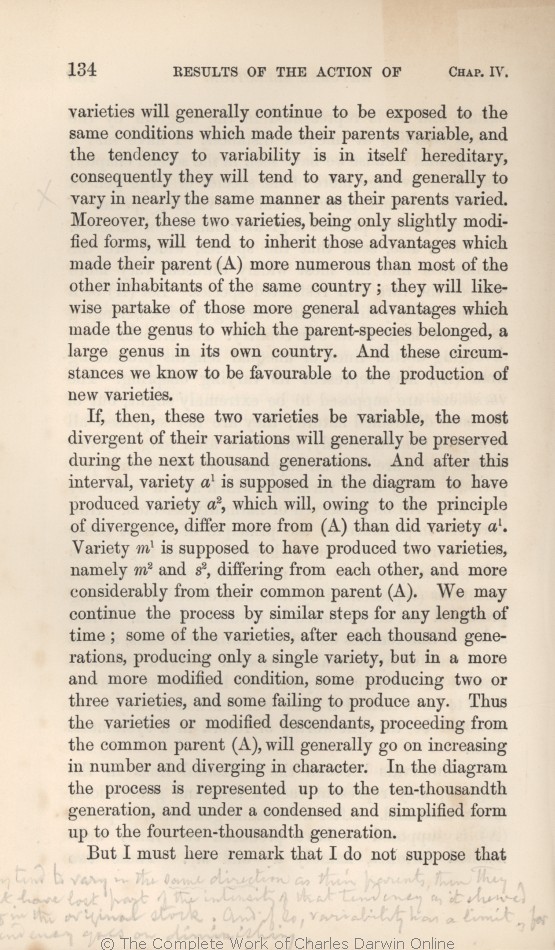varieties will generally
continue to | continue to 1859 1860 1861 1866 1869 | | still 1872 |
| hereditary, 1859 1860 1861 1866 1869 | | hereditary; 1872 |
| tend 1859 1860 1861 1866 1869 | | likewise tend 1872 |
| generally to vary 1859 1860 1861 1866 1869 |
| commonly 1872 |
| their parents varied. 1859 1860 1861 1866 1869 |
| did their parents. 1872 |
| ..... 1860 1861 1866 1869 1872 | | common 1859 |
| likewise 1859 1860 1861 1869 | | like-wise 1866 | | also 1872 |
| these circumstances we know to be 1859 1860 1861 1866 1869 |
| all these circumstances are 1872 |
| favourable 1859 1860 1861 1866 1869 | | favorable 1872 |
|
|
If, then, these two varieties be variable, the most divergent of their variations will generally be preserved during the next thousand generations. And after this interval, variety
a
1
is supposed in the diagram to have produced variety
a
2
,
|
a
2
,
1859 1861 1866 1869 1872 |
|
a
2
,
1860 |
|
a
1
.
1859 1861 1866 1869 1872 |
|
a
1
.
1860 |
|
s
2
,
1859 1861 1869 1872 |
|
s
2
,
1860 |
|
8
2
,
1866 |
| descendants, 1859 1860 1861 1866 1869 | | descendants 1872 |
| proceeding from 1859 1860 1861 1866 1869 | | of 1872 |
|
|
| But I must here remark that I do not suppose that
|









